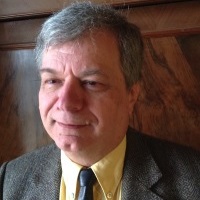
by David Levinson
The Veep that couldn’t shoot straight
I’m no fan of golf (unless it involves little windmills), but a lot of people seem to like it. They show it on TV and not a week goes by without at least one golf joke in the funny pages. It also intersected with politics last month. February continues to be the month that gives me very little to talk about, so I guess this is it.
The Professional Golfers’ Association likes to start their tour early in the pleasant climes of Hawaii and California. One such event is the Bob Hope Desert Classic held on a variety of courses in the Coachella Valley near Palm Springs. The highlight of the tournament for many is the pro-am event, where the pros competing in the tournament are matched with (celebrity) amateurs for one day’s round.
Pro Doug Sanders—best known for his odd swing and dapper dress—found himself in a foursome with Bob Hope, California Senator (and former song-and-dance man) George Murphy, and Vice President Spiro Agnew. On his very first shot, the Veep managed to hook the ball so far to the left it ended up on the path for an adjacent fairway. (Probably the farthest left he’s gone since being elected governor.) Trying to get back to the right fairway, he then sliced hard to the right. (This whole thing is starting to sound like a metaphor for Agnew’s political career.)
Bob Hope and Doug Sanders were standing in the path of the ball. Hope managed to duck out of the way, but Sanders was struck on the head. The blow drew blood, which Hope mopped up with a towel. Agnew was duly apologetic, and Sanders played gamely onward. At the nine-hole break, he was examined by a doctor, and the wound was sprayed with a pain-deadener.
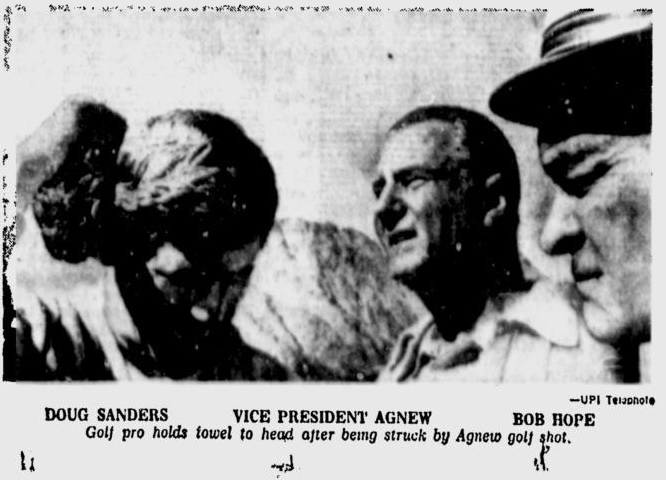 Wire photo of the aftermath.
Wire photo of the aftermath.
Agnew went on to have a terrible day. He frequently missed putts and took penalties for giving up on a hole. As the AP put it, “Agnew chatted amiably with the fans when his ball landed in or near them, which was often.” Sanders didn’t do much better, though he was already having a poor tournament. He won $200, far less than the top prize of $25,000. Agnew rather crassly quipped that it should just about cover his medical bills.
Am I picking on Spiro Agnew? Yes. Yes, I am. After his recent attack on the press, he deserves all the opprobrium he can get. He’s already being talked about as the clear front-runner for the Republicans in 1976. Let’s nip that idea in the bud right now.
Down the fairway
When he took over as editor, Ejler Jakobsson got off to a strong start. Since then, there’s been something of a return to form, although those C+ to B- issues have felt fresher than they did in recent years under Fred Pohl. Has he sent this issue cleanly down the fairway, hit a hole in one, or—worst of all—smacked the reader in the head with an errant shot? Let’s find out.
 Arrival at Ocean-Deep. Art for “Waterclap” by Gaughan
Arrival at Ocean-Deep. Art for “Waterclap” by Gaughan
Continue reading [March 2, 1970] Par for the course (April 1970 IF)

![[March 2, 1970] Par for the course (April 1970 <i>IF</i>)](https://galacticjourney.org/wp-content/uploads/2025/02/IF-1970-04-Cover-476x372.jpg)
![[February 2, 1970] Deceptive Appearances (March 1970 <i>IF</i>)](https://galacticjourney.org/wp-content/uploads/2025/01/IF-1970-03-Cover-479x372.jpg)
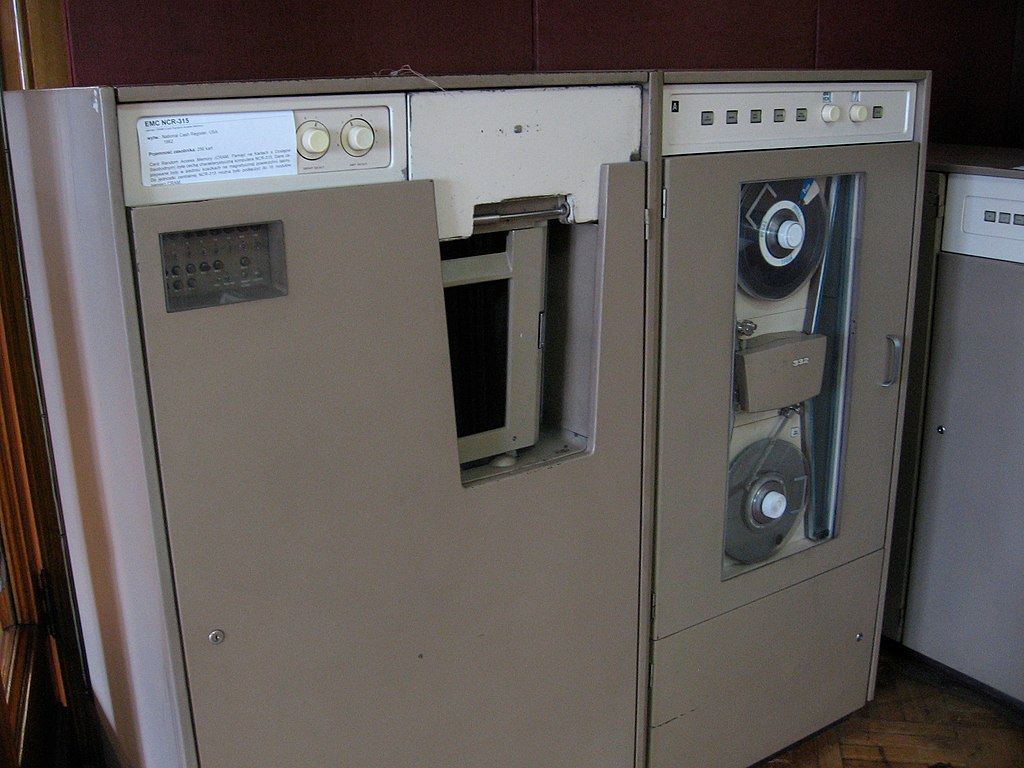 The arbiter, an NCR 315.
The arbiter, an NCR 315.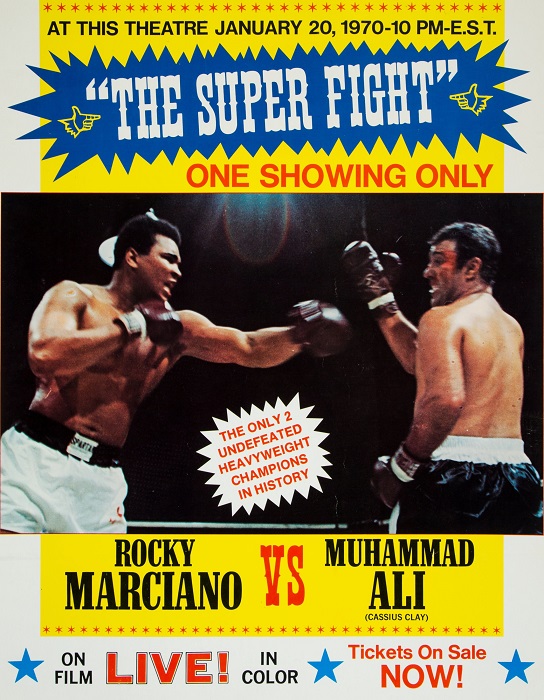 Movie poster for the event. That “LIVE!” is a little deceptive, which is something else Ali is complaining about.
Movie poster for the event. That “LIVE!” is a little deceptive, which is something else Ali is complaining about. Art actually for “SOS,” rather than just suggested by. Maybe because it’s by Mike Gilbert, not the overworked Jack Gaughan.
Art actually for “SOS,” rather than just suggested by. Maybe because it’s by Mike Gilbert, not the overworked Jack Gaughan.![[January 2, 1970] Under Pressure (February 1970 <i>IF</i>)](https://galacticjourney.org/wp-content/uploads/2024/12/IF-1970-02-Cover-500x372.jpg)
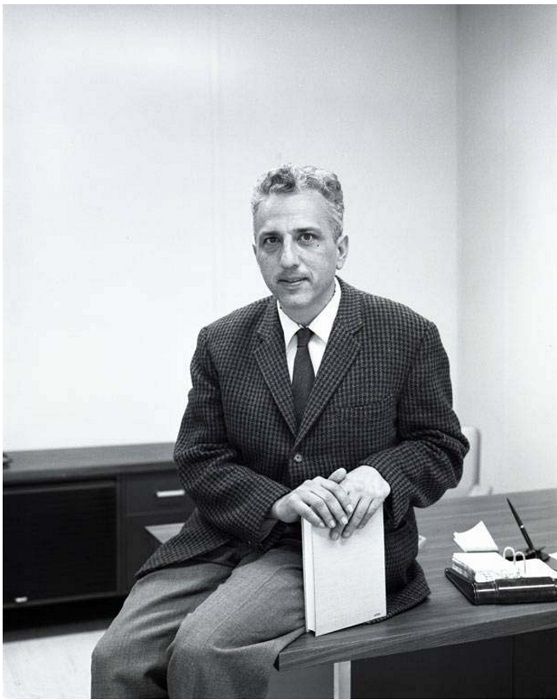 Dr. Edward D. Goldberg of the Scripps Institute of Oceanography in La Jolla, California
Dr. Edward D. Goldberg of the Scripps Institute of Oceanography in La Jolla, California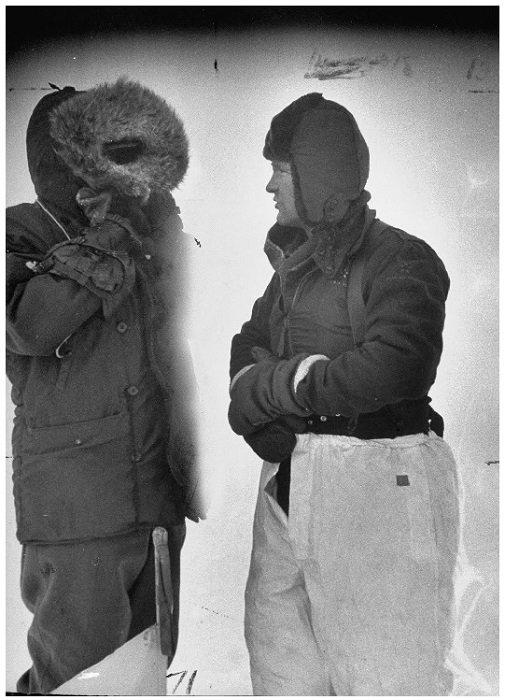 Col. Fletcher (r.) on his ice island in 1952. This was the most recent photo of him I could find.
Col. Fletcher (r.) on his ice island in 1952. This was the most recent photo of him I could find.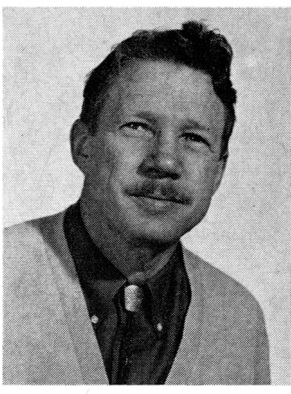 Dr. William W. Kellogg of the National Center for Atmospheric Research, in Boulder, Colorado
Dr. William W. Kellogg of the National Center for Atmospheric Research, in Boulder, Colorado Cover by Gaughan. Supposedly suggested by Whipping Star, but it looks more like it illustrates Pressure Vessel to me.
Cover by Gaughan. Supposedly suggested by Whipping Star, but it looks more like it illustrates Pressure Vessel to me.![[December 2, 1969] Communication Breakdown (January 1970 <i>IF</i>)](https://galacticjourney.org/wp-content/uploads/2024/11/IF-1970-01-Cover-478x372.jpg)
 Vice President Spiro Agnew addressing the Midwest Regional Republican Committee.
Vice President Spiro Agnew addressing the Midwest Regional Republican Committee. White House Press Secretary Ron Ziegler
White House Press Secretary Ron Ziegler